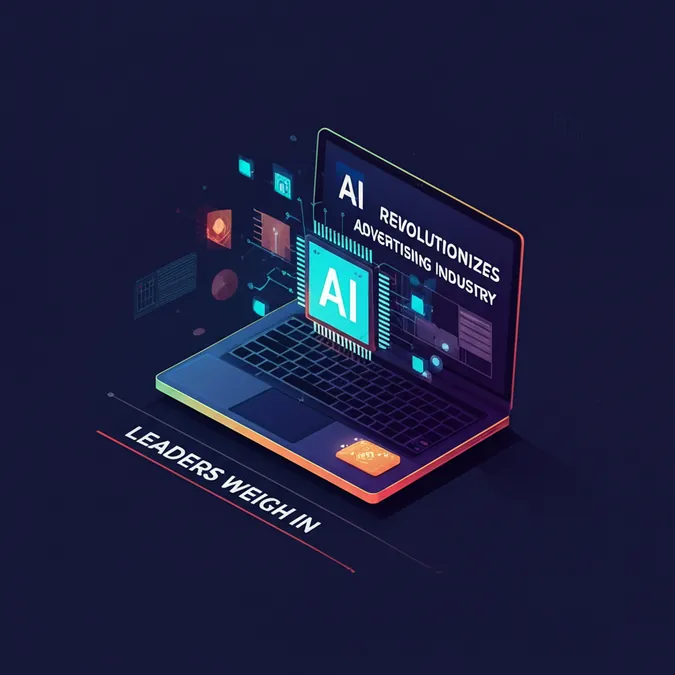AI Triggers The Great SaaS Data Unlock
The enterprise software world is on the brink of a major upheaval, centered on a critical question: who truly owns customer data? This isn't just a philosophical debate; it's rapidly becoming the defining battleground for B2B and SaaS vendors, with the rise of Artificial Intelligence, particularly tools like ChatGPT, acting as the primary catalyst.
Data silos are facing immense pressure. The rapid ascent of AI, with platforms like ChatGPT becoming a universal front-end for many, is compelling these walled gardens to open. Legacy B2B and SaaS vendors are on the verge of a rude awakening regarding who really controls customer data, a realization that won't come without significant conflict. The central question is whether to resist this change, as some are, or to embrace it, following the lead of more forward-thinking companies.
"AI & SaaS: Will MCP Replace Your Apps?"
– AI may soon replace your system of record – AI is becoming what's closest to you as the worker – Many of us already in ChatGPT 2+ hours a day – ChatGPT may soon be our model of what our CRM is
Latest with @rodriscoll + @HarryStebbings… pic.twitter.com/ZsnPGlkQy5
— Jason ✨👾SaaStr.Ai✨ Lemkin (@jasonlk) June 8, 2025
The Salesforce-Slack Moment That Changes Everything
Salesforce recently made a move that could define the enterprise software landscape for the next decade. By blocking AI competitors like Glean from accessing Slack data, they've brought a critical question to the forefront for every SaaS vendor: Is the data within your application YOUR data, or is it your customer’s data?

The answer to this will likely determine which vendors thrive in the AI revolution and which become relics of a bygone era.
As noted by Jamin Ball:
So what happened? The TLDR: Slack is making it significantly harder, or in some cases outright blocking, customers from using their own Slack data (stored conversations) the way they might want to. There are now tighter restrictions around storing, indexing, or copying Slack data accessed via the API. They’ve also introduced strict new rate limits: for methods like
conversations.historyorconversations.replies, you’re now limited to 1 request per minute, capped at 15 messages per call.And most critically, they’re blocking third-party platforms from indexing, copying, or storing Slack data, even if the customer wants that to happen.
What MCP Really Means (And Why Legacy Vendors Are Terrified)
Anthropic’s Model Context Protocol (MCP) isn't just another technical standard; it's poised to be the HTTP of AI. It offers a simple, universal method for AI systems to connect to any data source. Imagine a world where every website could instantly communicate with every browser, eliminating the need for proprietary plugins – that’s the potential MCP brings to AI and data.
For customers, MCP signifies freedom. Their AI assistant could pull data from Salesforce, analyze it alongside Slack conversations, cross-reference it with Notion documents, and generate comprehensive insights from their entire business ecosystem, all through a single interface.
For legacy SaaS vendors, however, MCP represents an existential threat to their most prized asset: data lock-in.
Some are embracing this as the future, like HubSpot. But many traditional B2B and SaaS leaders will likely resist this shift.
The Great Data Hostage Crisis
The uncomfortable reality of enterprise software is that many "sticky" B2B and SaaS companies maintain customer loyalty not because their products are superior, but because they function as data prisons.
Customers often stay because migrating a decade's worth of interactions, deal histories, and custom workflows to a new platform is an expensive, lengthy ordeal, potentially costing millions and taking 18-36 months.
This data hostage model has been effective for two decades. But AI is a disruptive force.
When customers can access their Salesforce data via ChatGPT, analyze it with Claude, and derive insights without ever logging into the Salesforce interface, what justifies the $150-$300 per user per month fee?
The Coming Customer Revolt
This transformation won't be instantaneous. Established enterprise buyers—like a VP of Sales who has used Salesforce since 2015—may continue to pay for familiar, albeit potentially inferior, systems.
But new customers are different. They've grown up with AI. They expect their tools to integrate seamlessly. Their vendor evaluations will boil down to one crucial question: “Can I use this data with my AI?”
The answer must be yes.
The New Buyer Checklist:
- Does this vendor support MCP or similar open protocols?
- Can I use ChatGPT/Claude as my primary interface?
- Will my data be accessible if I decide to switch vendors?
- Does this integrate with my AI workflow, or does it force me into theirs?
Vendors answering “no” to these questions will likely find themselves removed from consideration before even the first product demo.
The False Choice: Integration vs. Innovation
Legacy vendors are making a critical error by treating AI integration as a zero-sum game—either customers use the vendor's proprietary AI features, or the vendor loses the customer.
This isn't how customers think. They don’t want to choose between your AI and their AI. They want their AI to work seamlessly with your data.
Smart vendors understand this. They are actively implementing MCP, developing robust APIs, and positioning themselves as AI-native infrastructure providers rather than direct AI competitors.
The winning strategy isn’t “use our AI.” It’s “use our data with whatever AI you prefer.”
Why Data Portability Becomes Competitive Advantage
This leads to a seemingly counterintuitive dynamic: The vendors who make it easiest for customers to leave will become the hardest to leave.
When customers can use their preferred AI tools with your data, they are more likely to choose your platform initially. When they can easily export their data, they gain the confidence to invest more deeply in your solution.
This mirrors the psychological principle that contributed to AWS's dominance. Customers trusted AWS, in part, because they knew they could migrate away if necessary. That trust fostered deeper, more enduring relationships.
The Three-Year Timeline
Here’s a potential timeline for how this shift might unfold:
Year 1 (2025): Early adopters begin mandating MCP support in RFPs. Legacy vendors may dismiss this as a niche requirement and instead focus on their integrated AI features.
Year 2 (2026): The demand for MCP support grows to encompass the majority of new deals. Vendors who embraced openness early start winning competitive deals based purely on data accessibility. Legacy vendors initiate rushed efforts to retrofit openness into their systems.
Year 3 (2027): Data portability becomes a standard expectation. Vendors who constructed walls around their data find themselves with aging customer bases and declining new customer acquisition. The market will have moved beyond them.
The Salesforce Test Case
Salesforce’s decision to restrict Slack data access will be a significant case study—viewed as either a brilliant strategic move or a catastrophic misstep, depending on subsequent developments.
If they can deliver a superior AI experience within their own ecosystem, they might justify these data walls. If not, they’ve effectively painted a target on their back for every competitor building MCP-native alternatives.
The initial signs are not overwhelmingly positive. Salesforce’s current AI features are generally considered adequate, but “adequate” may not be enough to justify data imprisonment when customers can access “excellent” AI experiences elsewhere with their data.
What This Means for Every B2B AND SaaS Vendor
Every B2B and SaaS company must ask itself: Are we primarily a data company or a workflow company?
Data companies (like Salesforce, HubSpot, Workday, or even LinkedIn) are the most vulnerable. Their core value proposition is often “we store and organize your important business data.” If customers can access that data through superior external interfaces, what unique value remains?
Workflow companies (like Slack, Notion, or Figma) are more defensible. Their value lies in the collaborative experience and unique functionalities, not just data storage. Even if customers can query their data externally, they still need the platform for their daily operational tasks.
The most astute vendors are evolving from data companies into workflow companies. They are making their data radically accessible while simultaneously doubling down on creating unique user experiences that cannot be easily replicated elsewhere.
The Open Data Manifesto
Here’s what success looks like in the MCP era:
- Embrace radical transparency: Your customers’ data belongs to your customers, period.
- Compete on experience, not lock-in: Make your daily workflow so valuable that customers choose you even when they can easily leave.
- Become AI-infrastructure: Position yourself as the best place for AI to access domain-specific data, not as an AI competitor.
- Lead with openness: Make MCP support a core differentiator, as HubSpot has reportedly done, not a reluctant afterthought.
The Bottom Line
The data hostage model is dying. Customers are demanding their data freedom, and AI is providing them with the tools to achieve it.
Vendors can either fight this trend and gradually lose relevance, or they can embrace it and build the next generation of enterprise software.
The choice is binary, and the window for making it is closing rapidly.
The question isn’t whether your customers will demand data portability. The question is whether you’ll grant it to them voluntarily, or whether they’ll take it by force—by choosing your competitors.
The MCP revolution isn’t on the horizon; it’s here. It’s time to pick a side.


